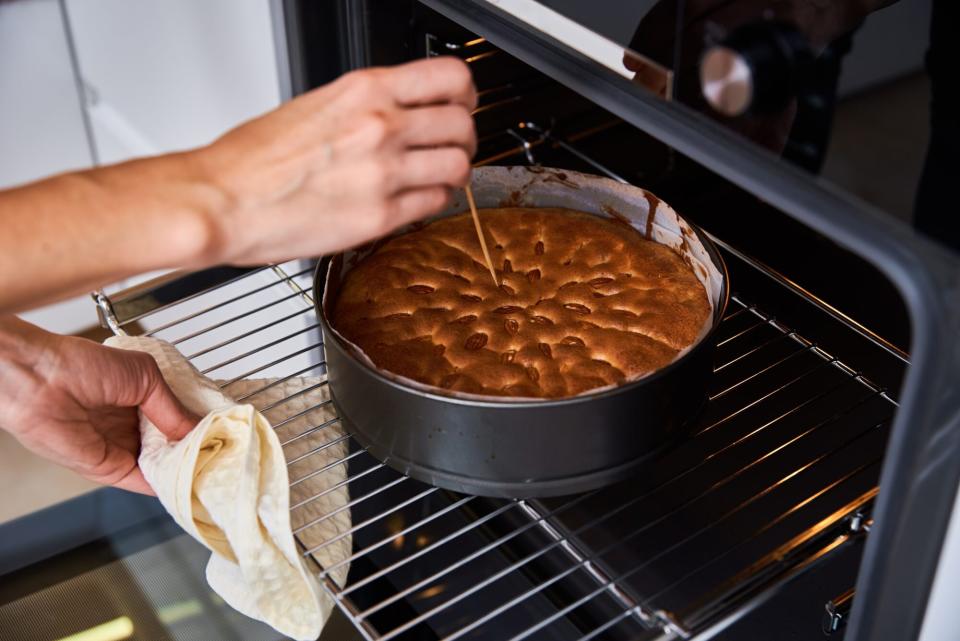Is Your Cake Baked Through? Here's How to Tell
Dotdash Meredith and Yahoo Inc. may earn commission or revenue on some items through the links below.
If making a cake from scratch is one of a home baker's greatest pleasures, then overbaking one must rank among the biggest disappointments. After all of the energy and care that goes into preparing the cake pans as well as measuring and mixing the ingredients properly, there's nothing worse than having the outsides of the cake get tough and the crumb inside turn out anything but tender and moist; we'd say that's enough to discourage you from trying again.
The good news is, there are ways to prevent such mishaps. A few tricks will help you determine when your cake arrives at the perfect moment to transfer it from the oven and onto a wire cooling rack.
Related: Why Mis-en-Place Is the Secret to Baking Success
Set Yourself Up for Success
Before you start to measure ingredients or prep the cake pan, make sure your oven temperature is correct. The best way to do this is with an oven thermometer set on the middle rack. Many home ovens are off, and there's no way to know unless you use a stand alone thermometer. Also, keep in mind that the recommended baking time in your recipe is a best estimate on the part of the recipe writer. Because ovens can vary, set your timer about 10 minutes before the time in the recipe, and begin checking then.

Aliaksandr Barysenka / EyeEm / Getty Images
How to Gauge Whether or Not the Cake Is Done
The easiest and best way is to insert a metal cake tester into the center of the cake. These simple tools are inexpensive and readily available at baking supply shops and online ($5.49 for three, amazon.com); when the cake is cooked, it should come out clean. If any of the cake batter clings to the tester, put the cake back in the oven, and test again after five minutes or so. If you don't have a metal tester, a wooden skewer or toothpick works just as well. You can also gently press on the cake with your fingertip; it should spring back. A
nother key indicator of doneness is when the cake is just starting to pull away from the sides of the pan. The key here is the phrase "just starting to pull away." If you look and see a pronounced gap between the cake and the pan, the cake is most likely overbaked.
Finally, some home bakers and professional pastry chefs swear by the listening test. They claim that if you put your ear to a cake, you can actually hear it baking, as the batter releases liquid during the process of transforming into that perfectly tender crumb. As the cake reaches peak doneness, the steaming sound grows fainter, until finally there's no sound at all. This obviously involves paying very close attention, but if you get into the habit of baking lots of cakes, you may want to give it a listen yourself.

